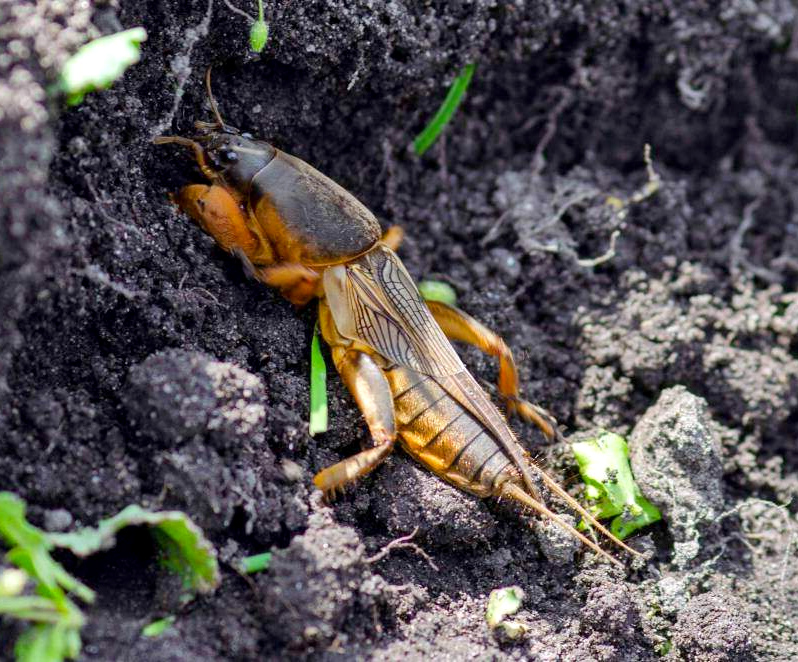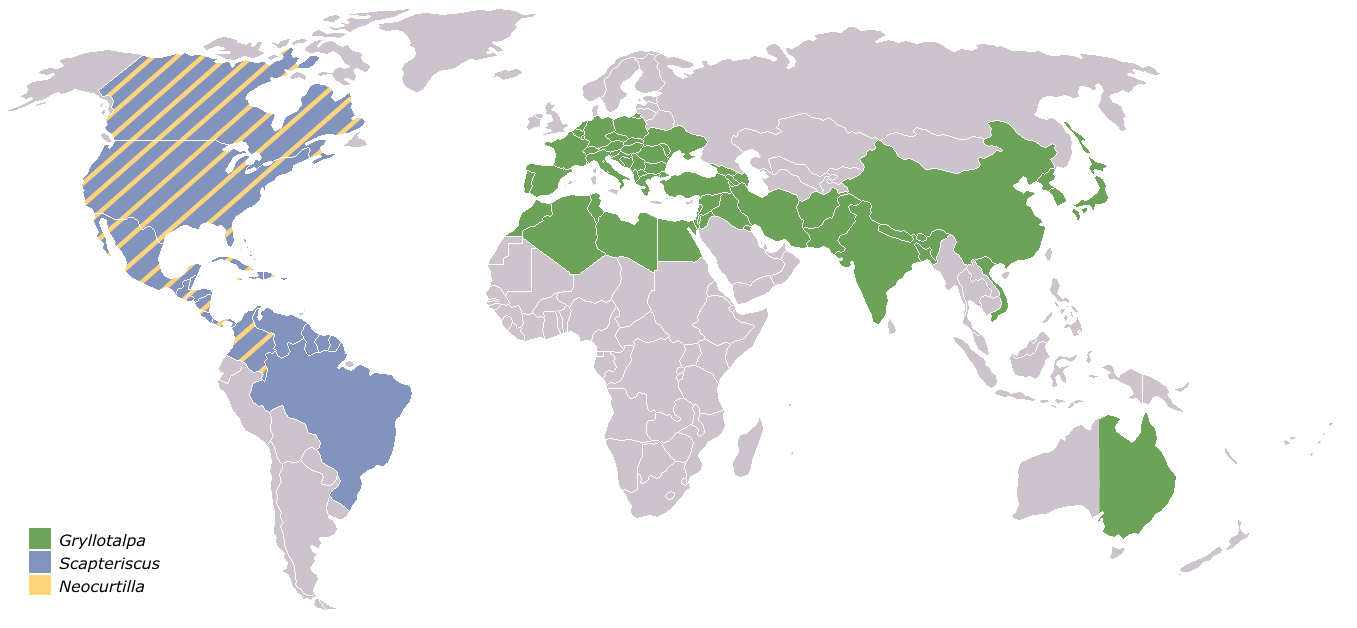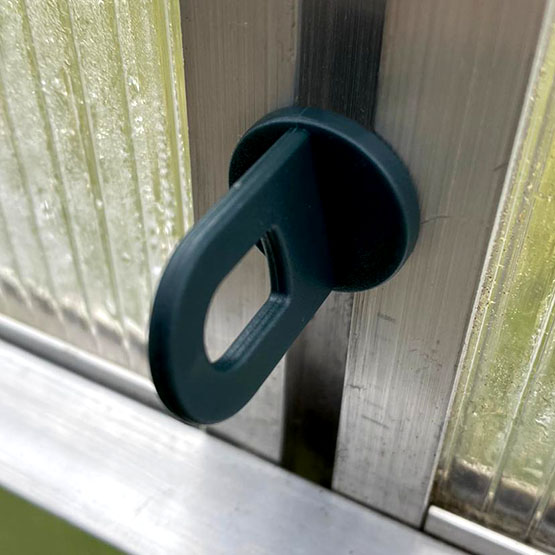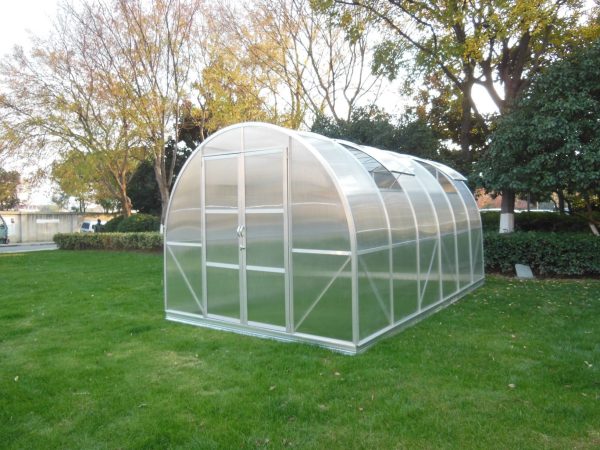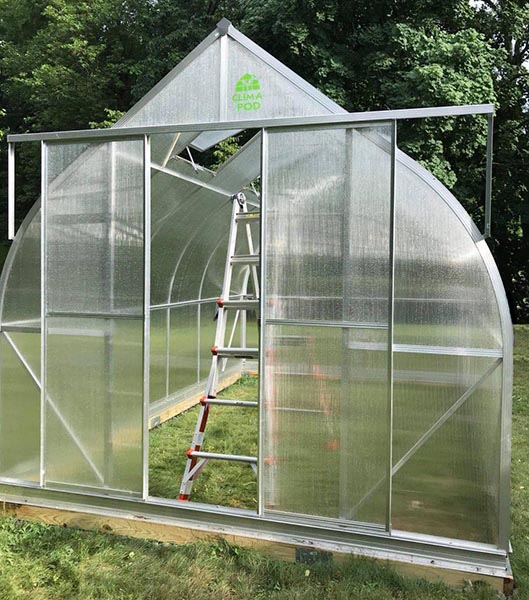One mole cricket (Gryllotalpa, Scapteriscus, Neocurtilla) can completely destroy up to 15 plants per night. The voracious mole cricket larvae cause no less harm than adult individuals. The photo shows how warlike this pest looks. To understand who you will have to deal with, read the description of the insect. After reading the article you will learn how to get rid of mole crickets using different methods.
Mole cricket description
The mole cricket is an insect belonging to the order Orthoptera. There are about 100 species. It is a widespread pest of farmland and garden crops. Habitat: everywhere.
An adult grows up to 5-8 cm. It has an external resemblance to a large grasshopper and a large shrimp. She has tentacles, antennae and paired limbs adapted for digging. She can swim, crawl, make underground passages and fly. Insect flight height: from 50 cm to 5 m.
The insect is active at night. For the winter, it hides in compost heaps or hides deep underground – up to 2 m. Before the onset of cold weather, it lives under the top layer of soil – at a depth of maximum 10-15 cm. For normal development and life, it needs moist, loose soil. Very prolific if cereals are present in the diet. Under favorable conditions, the mole cricket’s life cycle reaches up to 5 years, including the larval stages. The larva goes through 4 stages of development from the egg to the formation of an individual that is capable of reproduction.
How to understand that an area is infested with a mole cricket
The probability of seeing a mole cricket during the day is negligible, which creates some difficulties in determining whether an area is infested with this pest.
Indicates the activity of an insect by a set of signs:
- mass death of seedlings;
- withering of plants;
- damage to root crops;
- appearance of small loose piles of earth;
- earthen paths visible on moist soil;
- holes in the ground (entrance to the burrow).
Larvae and adult mole crickets harm crops, damaging their root system. They feed on the roots of plants: tomatoes, potatoes, carrots, cabbage, eggplants, peppers, ornamental flowers, and cereals. Adult insects are more omnivorous than larvae. A developed individual readily eats worms, small insects and large beetle larvae.
Advice. Clean the area thoroughly in the fall after harvesting. With the beginning of spring, when the top layer of the earth warms up to 10-15 degrees, mole crickets emerge from their winter holes and begin to feed on the remaining fruits.
What mole cricket eggs and larvae look like

The mating season for mole crickets begins in May and lasts until the beginning of July. Afterwards, the insect makes nests in which it lays up to 500 eggs. The place for laying becomes a pile of garbage or manure, or loose soil. The nest looks like a lump of earth, inside it is a chamber with dense walls. The masonry reaches 6×6 cm and is located at a distance of 10-15 cm from the surface.
The chamber is filled with yellow or light brown eggs, similar to ant eggs, but slightly larger. Egg size is 3.5 mm. The larvae appear approximately at the end of the 3rd week after nest formation. To the state of a sexually mature individual, the larva goes through 4 stages in 1-2 years. The speed of its development depends on nutrition and soil moisture. The size of the larvae is 1.5-3.5 cm.
But the larvae cause no less harm than adult insects. Their diet consists of small roots, seeds, and larvae of other insects.
First, the larvae eat the remains of the shell, and then begin to dig passages and tunnels. Adults prefer small insects, worms, large larvae of chafers and ladybugs.
How to get rid of mole crickets
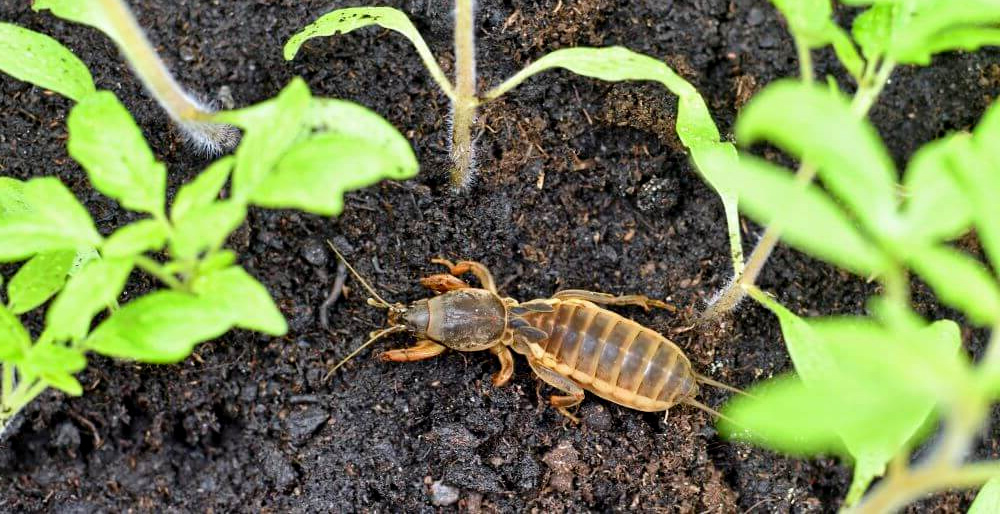
The fight against garden pests is carried out in different ways: prevention, scaring, destruction of masonry and destruction of individuals.
Measures to prevent the development of larvae:
- Clean the area in autumn and spring.
- Digg the ground in autumn and spring (nests destroying).
- Loosen the beds regularly.
- Dung bait traps.
You can scare away adults if you bury rotten fish, pine needles, a mixture of sand and kerosene, or onion infusion in the soil. To prepare this mixture, take 70 ml of kerosene per 1 kg of sand. Place it around the perimeter of the garden bed or greenhouse. To prepare onion infusion you will need 1 kg of onion peels and waste per bucket of water. Dilute the concentrate with water (1:5) and use it to water the beds after rain.
To scare away mole crickets, marigolds and chrysanthemums are planted on the site. You can lay the crushed stems and flowers of these plants underground.
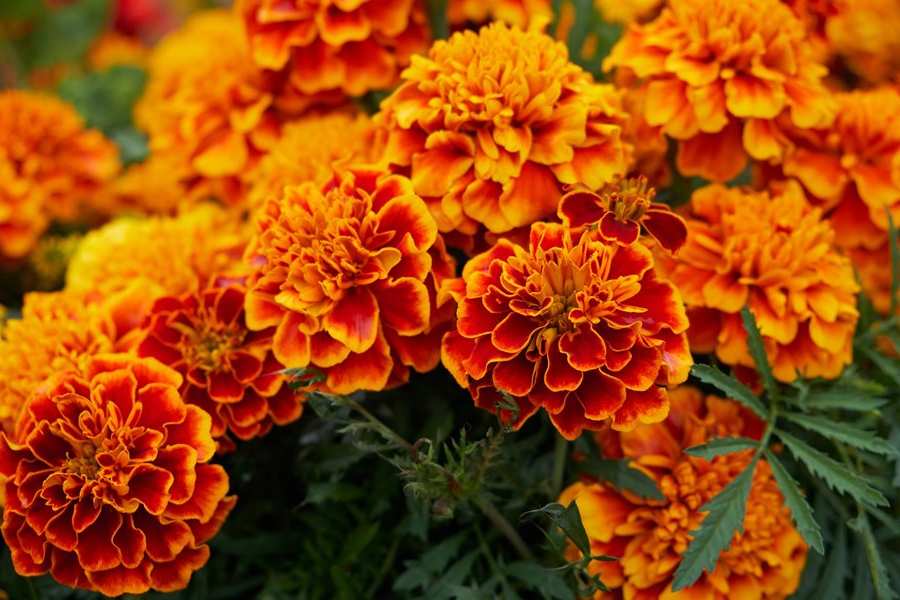
Pests can be destroyed using special chemicals. Use special products in accordance with the manufacturer’s instructions. To destroy mole crickets without chemicals, jars of water are buried throughout the site overnight, level with the soil surface. The neck of the jars should be 5-6 cm. Do not close the jar – the mole crickets must climb inside. In the morning, insects are destroyed. Some gardeners use boiled oatmeal or rolled oats instead of water to lure pests.
If you see mole crickets in your area, choose the most effective way for you to deal with them. Follow preventive measures in the future. Insects fly well and can move to your site from neighboring infested areas.

